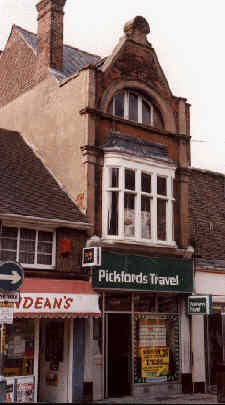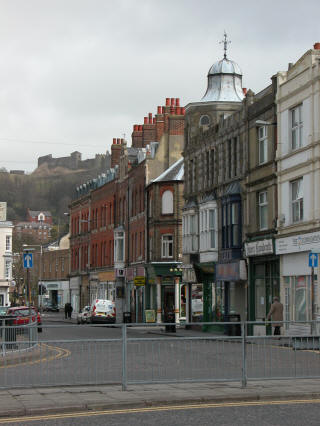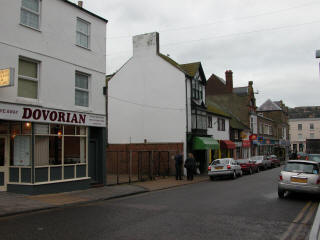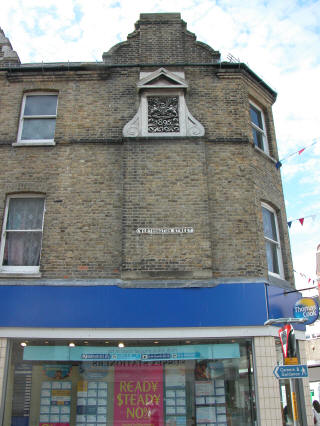|
Dover Index |
Worthington's Lane
|
|

No 10 Worthington Street
|
Standing proud between two
post-war buildings, no. 10 Worthington Street is the only building on
this side of the road to survive the combined efforts of Hitler and
F.W.Woolworth to destroy this block entirely.
By some lucky coincidence, this is the shop where my
grandfather ran his hairdressing business, and where my father was born
in 1912. |
| |
"This street is first mentioned in history as Gardiner's Lane.
Who Gardiner was, is not known; the family is not mentioned in any
Dover history, but the name seems to have been associated with this
lane since the reign of James I. The lands on the west side of
Biggin Street, when the Priory existed, belonged to that monastery,
and it is probable that, after its suppression, when the land was let
to tenants of the Archbishop of Canterbury, this lane was opened as an
occupation road from Biggin Street to the Priory fields.
Possibly, Gardiner was one of the Dover tenants. Gardiner's
Lane, previous to 1783, was the principal outlet from Biggin Street to
the Priory, Maxton, and Hougham. In Gardiner's time, it was,
doubtless, a mere cart track through a field. It is impossible
to tell when the first buildings were erected, but it would be safe to
say that the oldest now left there, those four cottages on the north
side, constructed of red bricks, and having dormer windows, date from
about the year 1780." (J.B.J. 1907)
|
| |
Worthington Street looking from York Street towards Biggin Street |
 |
| |
"The name was changed from Gardiner's Lane to Worthington's Lane
about the year 1800, the Worthingtons being being then a powerful
family in Dover, having their suburban residence at the Manor House,
Maxton. There was a Lieutenant Benjamin Worthington, R.N., who
was a resident of Dover all his life, except when he took part in the
Naval operations during the wars of Napoleon; and who, in his later
years, occupied his leisure in projecting schemes for the improvement
of Dover Harbour. There was also a Mr. B. Worthington in the
Corporation, in 1799 - probably the father of the Lieutenant; he, for
many years, kept the Ship Hotel and ran the Dover and London coaches;
and there was another of the same family who was a wool stapler, whose
warehouses were in this lane, and, eventually, gave it its second
name. The warehouses, which were built mainly of wood, were, in
later years, converted into fodder stores, a slaughter house, and
stables, much to the detriment of the thoroughfare."
(J.B.J. 1907)
|
| |
 |
Worthington Street looking from York Street towards Biggin
Street |
| |
"As part of the Streets Improvement scheme, in 1895, the lane
was again widened, and it was proposed to change its name to Military
Avenue; but there were strong objections to the old name of
Worthington being wiped out, and the change was confined to the
substitution of street for lane. It is now, with the tramlines
in it, a very fine thoroughfare, and the new buildings have greatly
enhanced its appearance." (J.B.J. 1907)
|
| |
 |
This building, on the corner of Biggin Street, built in
1895, was, for for at least 50
years, Timothy White's Chemists. My mother worked here before her
marriage to my father in 1937. The opposite corner, was, as in many
towns, Boot's the Chemist. |
| |
|



